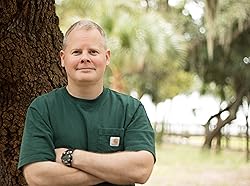>>Click here to read the first installment.<<
 |
| Mark Boss |
Tony: If you strip all the publishing away from it and get down to storytelling, I think everybody tells stories. Every conversation we have with our loved ones, we’re telling stories. If my Mom calls and tells me about an uncle that’s not doing well, she’s storytelling. As a people, a species, we developed language and writing — well, in part to keep track of what we were telling —
Mark: To give it permanence, because we wanted to give stories multi-generations.
Tony: But in those days, and up until recently, most people couldn’t read and write, but everybody would go down to the square to hear the town crier tell what happened in the court, or gather around their radio to listen to serials.
Mark: My grandfather told stories on the porch, and neighbors would come over to listen.
Tony: When it comes to writing, I think the difference between most people and people like you and me is the difference between a child drawing a picture with crayons and the artist painting a landscape or portrait. We found something in us that felt fulfilled and we were drawn further to continue filling that empty hole in our hearts.
Mark: You’re so driven, you spend years learning the technical skills, just like a painter. You take it way beyond what most people would do because you spent all these years developing it. If everyone else did that, you’d have a lot more people who were writers. They’d end up at the same place.
Tony: It is a craft, and it can be taught. It can be learned. Those of us who felt drawn to it also had to learn it —
Mark: Over a long period of time —
Tony: With a lot of trial and error. … If I turn away from it for too long, as you do from time to time, I actually feel heartsick, like there’s something missing. That ‘something’ is telling those stories. At least, for me it is.
Mark: Sometimes it’s the only way I can cheer myself up. If I sit down and start writing, within an hour or two I’m smiling and happy again. It’s unreal. It’s weird how sometimes you purposely turn away from it, then you think, “What the heck was I thinking? Why am I not doing that?”
Tony: What are we hoping to do is to write something that’s going to affect somebody. That they’re going to carry with them, share with other people, and it’s going to make their world a better world, and it’s going to go on beyond you, after you’re long gone. Or, we could just be writing stories to have fun with. If we’re lucky, we’ll be like H. Rider Haggard and a hundred years after we’re gone people will still be making movies out of our stories.
In the next post, we’ll talk about how writers and readers can refill the creative well.
>>Check out Mark’s stories, available in ebook and paperback at Amazon.<<
No comments:
Post a Comment